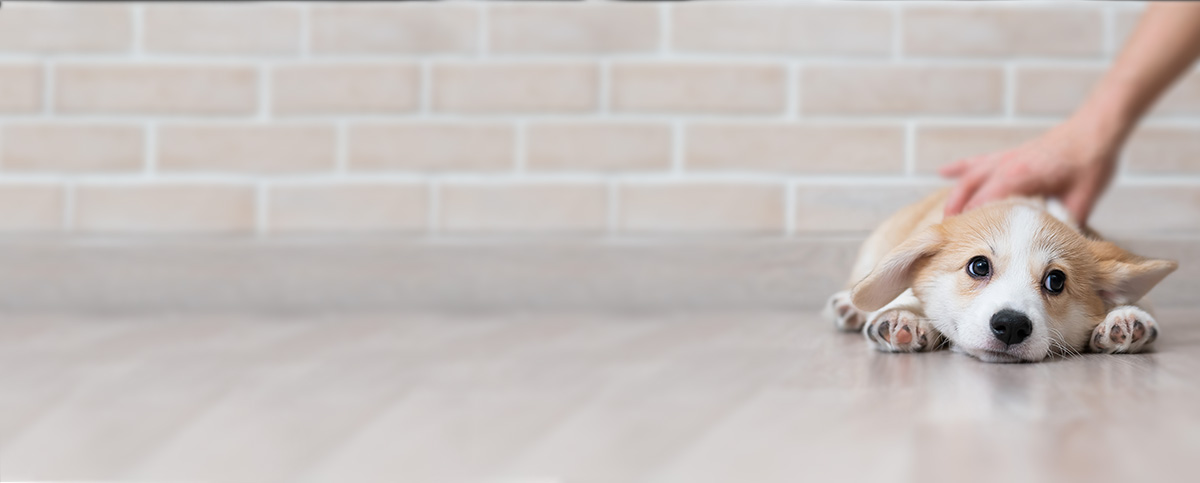Parvovirus
Parvovirus is a viral disease that is common in puppies worldwide. It attacks the intestinal system of unprotected puppies, and can often lead to death.
There is no guaranteed way to prevent puppies from being exposed to the virus, although there are measures that can be taken to decrease the chances of exposure. The key to whether or not the infection happens depends on three things:
The puppy's immune system
- This includes both vaccinations that the puppy has received and the protection the puppy gets from its mother.
- Check with your veterinarian for a vaccination schedule. Most vets recommend starting around 6-8 weeks.
- A puppy can only get protection from its mother if she was properly vaccinated prior to pregnancy, and if the puppy is allowed to nurse off the mother during the critical first few weeks. Puppies that are taken from their mother earlier risk having a poor immune response when exposed to different diseases.
- Once a puppy has received a series (3-5 sets) of parvovirus vaccinations, they are generally protected for life as long as they are maintained on a regular vaccination protocol.
Virulence of the virus
- This is how much of the virus the puppy is exposed to
Environmental Factors
- This is the catch all for other factors. It includes stress, nutrition, environment, and care that the puppy is receiving. All of these affect whether the exposure will lead to disease, and whether the puppy will survive.
How is a puppy exposed to parvo?
Parvovirus has been around for nearly 40 years. It is spread in fecal matter, and it is very hard to kill in the environment. A very small amount of virus can be enough to kill a puppy. Infected dogs shed large numbers of viral particles. This means that the virus is everywhere. Some dogs can even become subclinically infected - meaning they do not appear sick. These dogs then spread virus around a large area.
Because this virus can be everywhere, there is no way to completely prevent exposure. However, you can take the following measures to decrease the chance of your puppy catching parvovirus:
- Restrict your puppy from high risk areas (where unvaccinated dogs might go) until their vaccination series is completed.
- Do not allow your puppy around unvaccinated dogs until their vaccination series is completed.
Signs of Infection
Parvovirus attacks the cells in the intestine, allowing bacteria and toxins into the bloodstream. Many of the signs of parvovirus are associated with the gastrointestinal tract. Vomiting and diarrhea are classic signs of parvovirus infection, especially if they have blood in them. However, often times the very first sign is a puppy that just "isn't feeling right" or doesn't have a normal appetite. Any of these signs in a young puppy are an emergency, and you should see your veterinarian immediately.
Parvovirus kills in two ways
- Diarrhea and vomiting lead to extreme fluid loss and dehydration until shock and death result
- Loss of the intestinal barrier allows bacterial invasion of potentially the entire body. Septic toxins from these bacteria result in death.
Treatment
We do not have treatments to specifically target the virus. Therapy consists of supporting the puppy with fluids and antibiotics (for secondary infections) and trying to boost their immune system to fight off the disease. The best chance for survival occurs when signs are noticed early and treatment initiated promptly.
If your puppy contracts parvovirus, we recommend that you clean any surfaces that the puppy vomited or defecated on with bleach if possible, as this does kill the virus. After treatment, puppies are considered to be infective for 6 weeks. Additionally, parvovirus can live on organic matter (dirt/grass) for an indeterminate amount of time. We recommend not getting another potentially at risk dog (puppy or unvaccinated dog) for at least a year.
Resources:
Cookies on this website are used to both support the function and performance of the site, and also for marketing purposes, including personalizing content and tailoring advertising to your interests. To manage marketing cookies on this website, please select the button that indicates your preferences. More information can be found in our privacy policy here.


